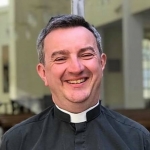In this blog, CTC Development Worker Ivonne Loján Maldonado shares some of the insights of the Hispanic and Portuguese Community of St. Martin’s Church, Plaistow after attending the recent Citizens UK National Assembly – held just days before the General Election.
On 1 July 2024, I had the privilege of accompanying eight Spanish and Portuguese speaking community members from St Martin’s Church to the Citizens UK National Assembly. This event provided a platform for community members to listen to and discuss specific policy proposals and their potential impacts. After the assembly, I asked participants to share their thoughts on the importance of such events, their key takeaways, and their plans going forward.







 This is the last of our Director’s Lent blogs on silent prayer. His
This is the last of our Director’s Lent blogs on silent prayer. His 